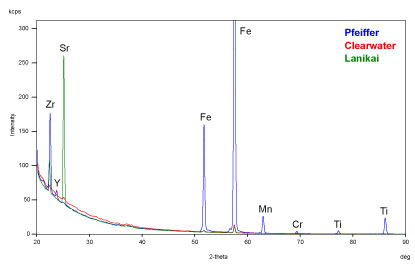Characterization of Beach Sand Using WDXRF and XRD
Home » Characterization of Beach Sand Using WDXRF and XRD
WDXRF and XRD are complementary techniques that are often used together for the characterization of unknown materials from a wide variety of industries.
Anyone who has visited beaches around the world is aware of how sand comes in a wide variety of colors and textures. Sand has such a wide variability due to the processes involved in its formation. While most sand originates due to weathering of rocks and minerals on land, shells and coral in the ocean also can contribute to the composition of sands. Since beach sand is typically created from the local surroundings, the compositions constitute a unique fingerprint.
Wavelength Dispersive X-ray Fluorescence spectroscopy (WDXRF) and X-ray Diffraction (XRD) are two powerful tools that allow us to obtain detailed characterization of materials, covering both the elemental composition and crystalline phases present. For this reason, applying these two techniques to the characterization of beach sand provides a window into the local geology and processes that produce the sand in different parts of the world.
The example of the sands here is analagous to identifying unknown material from a chemical process or to identifying a deposit left over in semiconductor process chamber, to name but two examples. Contact us today to learn how we can help with your next project.
Would you like to learn more about WDXRF and XRD?
Contact us today for your WDXRF and XRD needs. Please complete the form below to have an EAG expert contact you.
